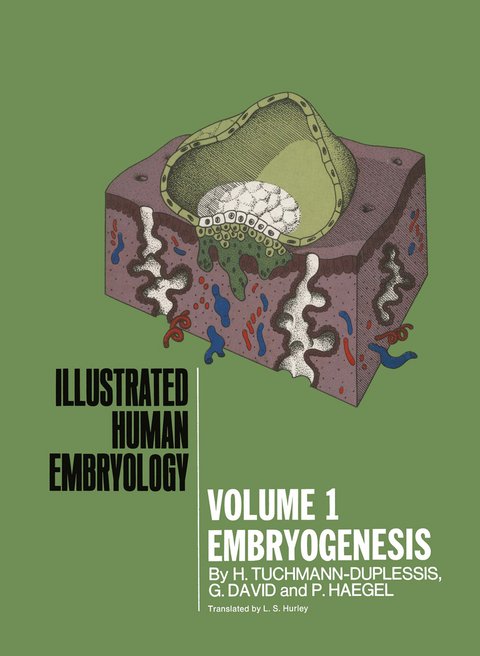
Embryogenesis
Seiten
1982
Springer-Verlag New York Inc.
978-0-387-90018-6 (ISBN)
Springer-Verlag New York Inc.
978-0-387-90018-6 (ISBN)
MBRYOLOGY studies the succession of transformations undergone by the fertilized E egg in the formation of a new individual. Development of the embryo is directed by morphogenetic mechanisms ruled by a strict chronology. Survival of the egg, its transport in the genital tract, and the adaptation of the maternal orga nism to its presence are controlled by hormonal actions. Knowledge of these subjects is proving to be increasingly important for the medical practitioner. Such information helps to explain anatomic correlations; organ relation ships also illuminate the etiology of numerous pathologic conditions. Disturbances of prenatal development engender congenital malformations and constitute an important cause of perinatal mortality and postnatal morbidity. Our goal in preparing Volume I was to introduce the student to the complex pheno mena of embryonic development in a clear and direct way. We tried to present an overall view of the simultaneous nature of the multiple and rapid events in embryogenesis. Also, we thought it appropriate to treat certain topics in depth, becallse of their difficulty, or their physiological or pathological implications. Thus, gastrulation and formation of the body shape, including flexion, which are par ticularly dynamic processes, can best be understood by following their sequences in detail. Special attention '}Jas also devoted to the placenta, since it assures the functions of nutrition, respiration, and excretion. It is also an endocrine gland upon which the hor monal equilibrium of pregnancy depends.
Preliminary definitions.- Gametogenesis.- Phenomena of fertilization.- Preparation for implantation.- First week of development.- Second week:·Formation of embryonic disc.- Third week: gastrulation.- Destiny of the three germ layers.- Development of the ectoderm: neurulation.- Development of the mesoderm.- Development of the entoderm.- Flexion (formation of body shape).- Flexion in cross section.- Flexion in longitudinal section.- Development of fetal membranes.- The placenta: morpholoqy.- The placenta: pnysiology.- Twins.- Principal stages of development.- General mechanisms of normal development.- Anomalies of development.- Examples of human mallormations.- Experimental malformations.- Fetal-maternal incompatibility.
| Erscheint lt. Verlag | 15.12.1982 |
|---|---|
| Reihe/Serie | Monographien aus dem Gesamtgebiet der Physiologie der Pflanzen und der Tiere ; 1 |
| Übersetzer | L. S. Hurley |
| Zusatzinfo | IX, 110 p. |
| Verlagsort | New York, NY |
| Sprache | englisch |
| Maße | 210 x 279 mm |
| Themenwelt | Studium ► 1. Studienabschnitt (Vorklinik) ► Anatomie / Neuroanatomie |
| Naturwissenschaften ► Biologie ► Genetik / Molekularbiologie | |
| Naturwissenschaften ► Biologie ► Zellbiologie | |
| ISBN-10 | 0-387-90018-7 / 0387900187 |
| ISBN-13 | 978-0-387-90018-6 / 9780387900186 |
| Zustand | Neuware |
| Haben Sie eine Frage zum Produkt? |
Mehr entdecken
aus dem Bereich
aus dem Bereich
Buch | Hardcover (2022)
Urban & Fischer in Elsevier (Verlag)
220,00 €
Struktur und Funktion
Buch | Softcover (2021)
Urban & Fischer in Elsevier (Verlag)
44,00 €
+ Web + Lehrbuch
Buch | Hardcover (2022)
Urban & Fischer in Elsevier (Verlag)
249,00 €


